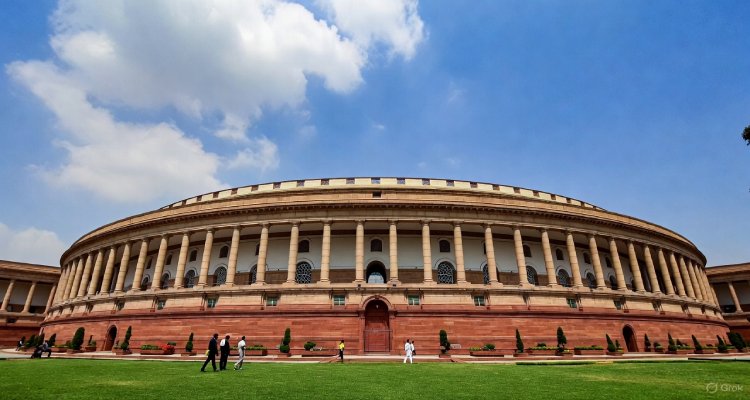Cloudburst and Flash Floods: What Swept Through Dharali and Why It Matters
A cloudburst triggered deadly flash floods in Dharali village near Gangotri, Uttarakhand, killing four and trapping dozens. Here’s what caused it—and why such disasters are rising.
Introduction: A Village Swallowed by Water and Mud
In the quiet Himalayan village of Dharali, nestled along the route to the sacred Gangotri shrine, disaster struck with terrifying speed on August 5. A massive cloudburst in the catchment of the Kheer Ganga River triggered a flash flood that tore through homes, swept away trees and vehicles, and buried half the village in a swirling mass of slush and rubble. At least four people died, and 60 to 70 others were trapped or injured in the chaos.
This latest catastrophe underscores a growing threat in India’s fragile Himalayan belt, where climate change and urban pressures are amplifying nature’s wrath.
Context & Background: Dharali’s Sacred Geography
Located in Uttarkashi district of Uttarakhand, Dharali sits at approximately 1,160 meters above sea level and serves as a primary stopover for pilgrims en route to Gangotri, the origin of the Ganges River. The village is a popular hub of activity, peppered with hotels, restaurants, and homestays, welcoming spiritual seekers and tourists alike.
However, its picturesque location also places it squarely within one of the most climate-vulnerable zones in the Indian Himalayas. This region has seen a rise in extreme weather events in recent years—cloudbursts, landslides, flash floods, and avalanches, all becoming frighteningly common.
What Happened in Dharali: A Cloudburst Turns Deadly
In the early hours of August 5, a cloudburst—defined by the India Meteorological Department (IMD) as rainfall exceeding 100 mm per hour over a 20-30 sq. km area—unleashed torrents of water into the narrow Himalayan valleys. The massive downpour in the Kheer Ganga catchment area rapidly escalated into a flash flood, engulfing Dharali village in a matter of minutes.
Mud, boulders, and debris surged down the slopes, burying homes, uprooting trees, and sweeping away everything in their path. Emergency teams, including disaster response forces, were quickly mobilized, but terrain challenges and ongoing rainfall made rescue operations perilous.
Cloudbursts Explained: When the Sky Breaks Open
Cloudbursts are among the most devastating natural disasters in the Indian subcontinent, especially in mountainous regions.
What is a Cloudburst?
-
Cloudburst refers to intense rainfall concentrated over a small area in a short period, usually with lightning and strong winds.
-
According to the IMD, it’s akin to the entire cloud “bursting” open—as if pierced, rapidly dumping its moisture.
-
They are difficult to predict because of their localized nature, both spatially and temporally.
-
Though not exclusive to mountains, hilly regions—like those in Uttarakhand, Himachal Pradesh, Sikkim, and Northeast India—are more prone due to orographic uplift, where moist air rapidly rises along mountain slopes.
Flash Floods: Sudden, Swift, and Devastating
Often triggered by cloudbursts, flash floods occur within six hours of the initiating event. In Dharali’s case, this was almost instantaneous.
Key Characteristics:
- Caused by heavy rainfall, tropical storms, dam failures, or snowmelt.
- Hardpan soil, poor drainage, and uncontrolled construction worsen their impact.
- Urbanization reduces the land’s ability to absorb water, increasing surface runoff.
- Infrastructure like roads, parking lots, and buildings contribute to blocked drainage, exacerbating the disaster.
- Low-lying areas—such as basements, underpasses, and underground garages—often become death traps.
Expert Insight: Climate Change and Himalayan Fragility
Environmentalists and meteorologists have long warned that the Himalayas are becoming a hotspot for extreme weather events.
“The increasing frequency of cloudbursts is directly linked to climate change and rising temperatures in the region,” says Dr. Arvind Mishra, a climate scientist at the Centre for Himalayan Ecology. “More heat means more evaporation, which means more moisture in the air—and that translates to intense rainfall events when conditions align.”
Studies by the Indian Institute of Technology (IIT) and the Indian Space Research Organisation (ISRO) confirm that glacial melt, erratic monsoons, and deforestation are weakening the natural balance of these mountain ecosystems.
Public Reaction: A Wake-Up Call
The disaster has ignited a wave of public grief and concern across India. Many took to social media demanding better early warning systems and stricter regulations on tourism and construction in ecologically sensitive zones.
Local residents, some of whom lost homes and livelihoods, are now being sheltered in temporary relief camps, relying on government and community support for basic needs.
“This isn’t the first time. Every year we see nature turning violent. It’s heartbreaking,” said Suresh Rawat, a local hotel owner in Dharali who lost his property to the flood.
Impact & Implications: What Lies Ahead
The aftermath of the Dharali disaster extends far beyond the immediate loss of life and property. It underscores the urgent need for:
- Improved forecasting and localized weather alert systems
- Stricter regulation of construction in high-risk zones
- Disaster preparedness drills in vulnerable communities
- Ecological restoration, such as reforestation and soil stabilization
- Sustainable tourism practices to reduce environmental strain
As the climate crisis deepens, India’s mountainous states will have to reimagine their approach to development, disaster management, and climate adaptation.
Conclusion: Nature’s Warnings Are Getting Louder
The tragedy in Dharali is not just a story of loss—it’s a stark warning. In a warming world, cloudbursts and flash floods are no longer rare anomalies but predictable dangers. And while the science behind these phenomena is well-understood, policy and preparedness are still catching up.
Without swift, science-backed action, many more Himalayan villages may find themselves at the mercy of skies that suddenly open up—not with blessings, but with disaster.
Disclaimer: This article is intended for informational purposes only and is based on publicly available data and expert commentary at the time of publication. It does not substitute official forecasts or emergency instructions.











